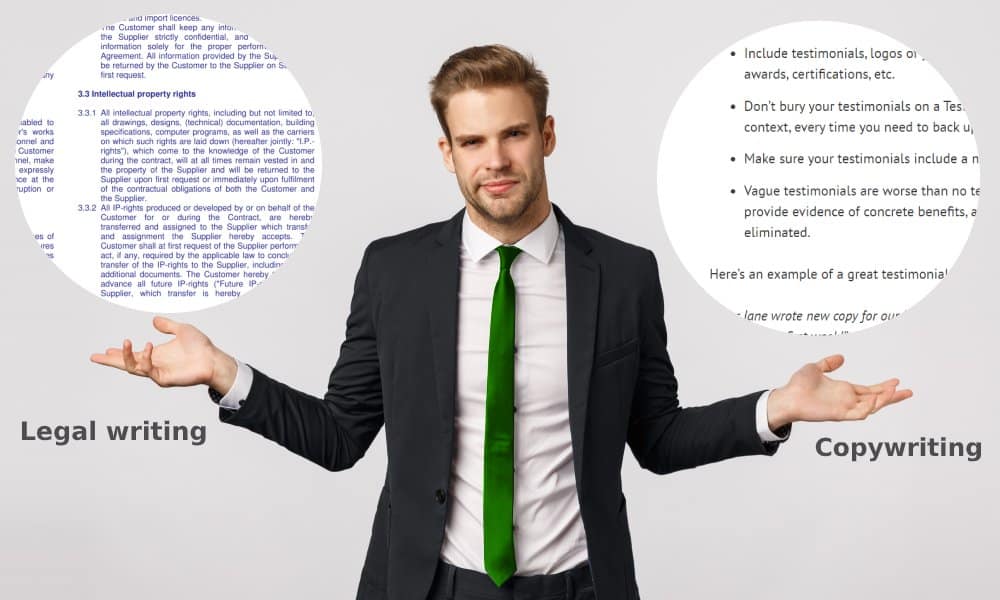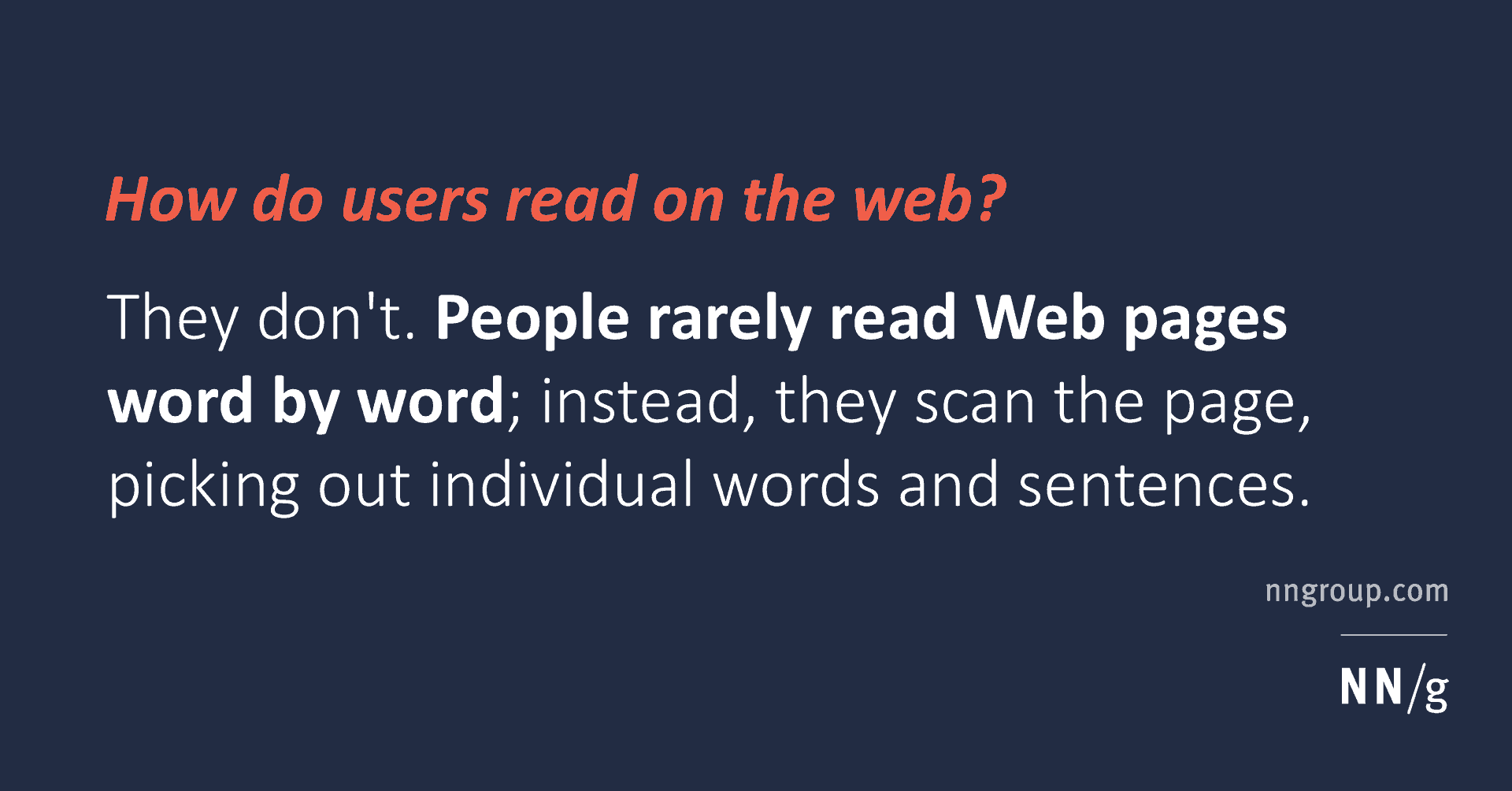I’ve been looking at a lot of legal websites recently, and one issue sticks out. Readability.
Legal websites are full of legal writing rather than copywriting. For the average visitor, that means they are just hard work!
Readability of law firm websites
We analysed 50 legal websites. We looked at the home pages, about pages and a sample blog from each where available. Here’s what we found:
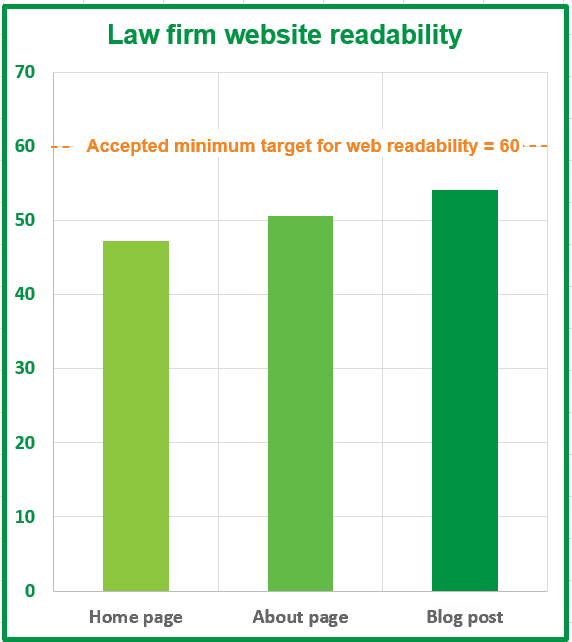
You can see a line across the chart at score 60. That’s the accepted minimum standard for website readability. On average, law sites don’t hit the standard.
You can also see that home pages and about pages are less readable than blogs. That’s a concern. These are the pages potential clients visit when they’re trying to find out about you. And I’ll bet they get far more visits than any single blog. These pages matter!
We went further. We broke those websites down by size of the law firm.
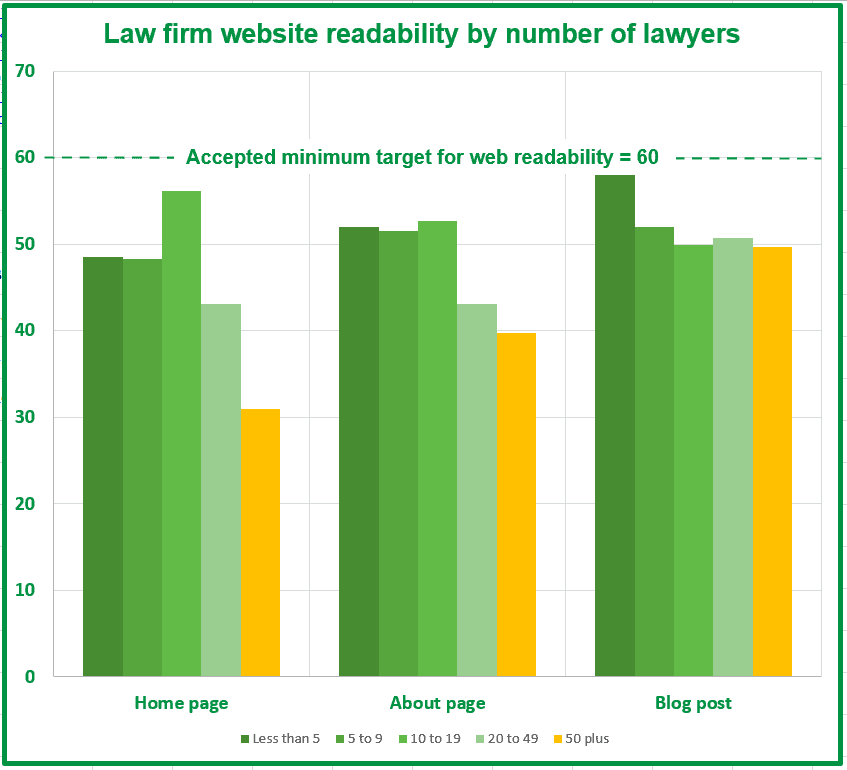
Interestingly, scores for the home and about pages drop off once you get above 20 lawyers in a practice. It’s not clear why. Maybe it’s committee approval of copy? Maybe the firm has become big enough that it doesn’t sanity-test outside the team? Maybe it’s the challenge of directing visitors to a wider range of expertise areas. Whatever the cause, larger firms have a lot to gain from revisiting their home pages.
What is a readability score?
In case you’re wondering, a readability score is a way of calculating how easy or hard it is to read a piece of writing. The most popular system, which we use at NoBull, is the Flesch-Kincaid system. The higher the score, the easier it is to read and understand.
This table shows readability scores for various types of content:
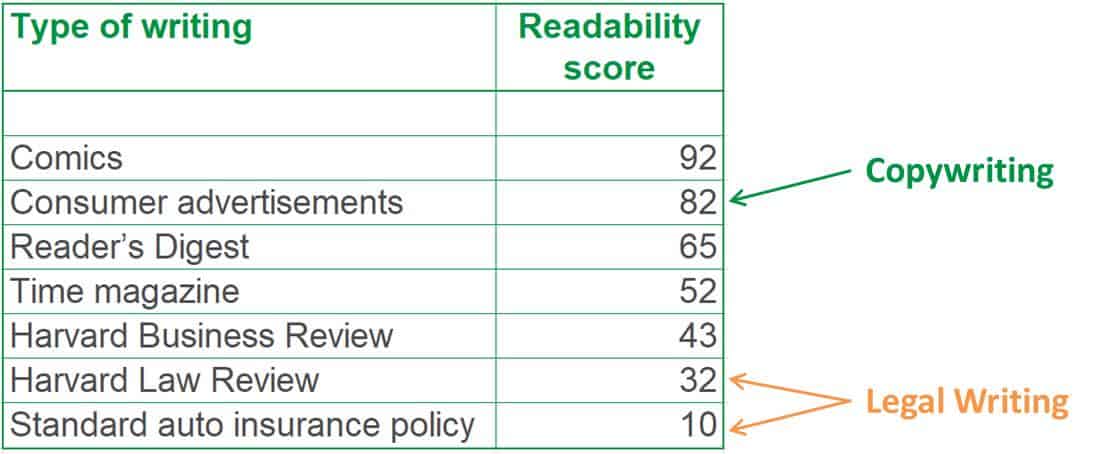
(Source)
Notice how the legal writing categories have low scores, while ad copy has high scores. This is key to understanding why so many legal websites are hard to read.
The difference between legal writing and copywriting
Lawyers are not bad writers. (Not all of them, anyway!) But they are overwhelmingly better at legal writing than at copywriting. The two styles of writing are entirely different, with different goals.
- Legal writing is about being accurate and precise. It’s unemotional. On the whole, people read because they have a need to, not because they want to. (When was the last time you reviewed a contract for fun?)
- Copywriting, on the other hand, is all about engaging the emotions, telling stories and driving action. It’s about attracting a reader, engaging them and getting them to do something. Usually enquire or buy.
Both are valid, they’re just different. And when lawyers trained in one kind of writing do another, the results are not pretty.
This leaves legal firms with a challenge:
As highly trained experts, they want and need to demonstrate their expertise. Content marketing – blogging and educating – is an excellent way to do that, but most lawyers can’t write for the web.
So what are the options?
How to improve the readability of your law firm website
Here are some ideas you may want to explore.
Hire a copywriter for key sales pages
Copywriters are skilled in writing copy which converts. They present your business as professional and trustworthy, then nudge readers towards contacting you. Web copywriters understand how people read on the web.
They’re a great solution for your key sales pages. The ones which get the most traffic, or are where ‘serious buyers’ go to check you out. Your home page, your about page, your services or expertise pages and your contact page.
These pages probably get 80% plus of the traffic on your website. They don’t change that often. Even if your marketing budget is limited, it’s worth investing in a good copywriter to get them right
What about your blog?
This probably has far more pages, which get far less traffic each. Additionally, there’s likely to be expert legal comment in many of the posts. You can use a copywriter, but make sure you get a specialist legal one, and make sure you approve every article carefully. Legal copywriting costs can add up too, depending on how often you post to your blog.
1. Train someone in-house to write for the web
Is there someone on your team who likes writing and editing? Not a lawyer – you want your lawyers out working with clients – but someone in the support team.
There are courses specifically on writing for the web. Make sure any course you choose includes not just readability, but also SEO optimisation. That includes choosing keywords, using them in headings and copy, plus adding page titles and meta descriptions. If you’re adding images to your blog posts (highly recommended), someone should also be responsible for image optimisation. (File size and type, file name, alt text.)
You will also need an approval process, so that the relevant lawyers vet content for accuracy before it’s published.
2. Work with a content marketing provider
If you don’t have in-house expertise, why not work with someone who does?
At NoBull Marketing, we offer content marketing packages where we take care of it all for you. Many lawyers take voice memos already – simply record your blog in the same way and send it to us. We transcribe, edit and optimise for SEO. We source and optimise images. Once the content is approved, we publish and promote on social media. It’s designed to be as easy and quick as possible for you.
PS: this post is all about readability of your copy. If you really want your website to work, you also need to consider visual impressions, including font size and spacing, and the use of images and diagrams. We’ll be covering these in other posts.
PPS: If you’re responsible for a law firm website and you’d like to assess its readability, just get in touch and we can show you how to do this. (No charge.)

